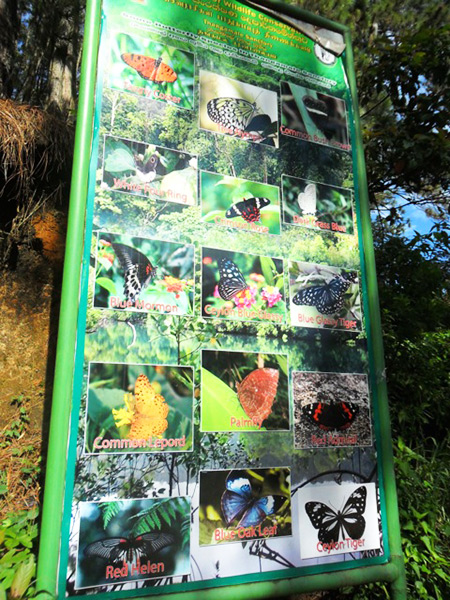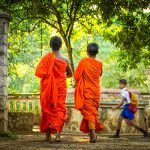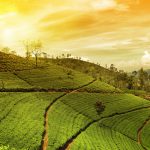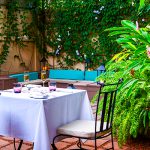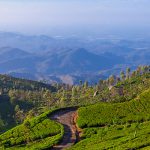INSIDE SRI LANKA A monthly insider’s report by Royston Ellis, January 2016
Sri Lanka’s wildlife is a bonus for visitors who visit the island on holiday. It’s not just the mainstream attractions like the Yala National Park, renowned for its elephants and leopards, or the bird sanctuaries to give twitchers palpitations, there are also less publicised creatures to amaze the causal watcher. Particularly the country’s extraordinary variety of butterflies.
A collection of butterflies is called a “kaleidoscope” and it’s an appropriate name for the changing colours of Sri Lanka’s beautiful butterflies , of which there are 245 different types.
Sri Lanka’s butterflies are the insects of legend. It is said that on certain days all the butterflies in the island form a kaleidoscope and flutter off towards Adam’s Peak, never to be seen again. Given their short life span, that’s not surprising. Some butterflies in Sri Lanka are, however, endangered species, as their natural habitat changes.
Although the Fauna and Flora Protection Ordinance lists all butterflies in Sri Lanka as protected, their environment is not. The most significant threat is the disappearance and degradation of forest, grassland and coastal habitats due to human activity, resulting in the natural habitat of butterflies becoming degraded.
The coastal habitats are also threatened due to the development of hotels and resorts in many near-pristine areas of the coast. The heavy use of pesticides also destroys various stages of a butterfly’s life cycle.
Endemic Species
The number of endemic species in Sri Lanka) is cited as between 20 and 23. Some 76 to 99 species are regarded as threatened while the Ceylon Rose (Pachliopta jophon) is stated to be ‘critically endangered.’
To encourage appreciation of Sri Lanka’s butterflies, one was adopted in 2010 as a national emblem of Sri Lanka, this is the Sri Lankan Birdwing (Troides darsius) which is actually the country’s largest. It has a wingspan spreading 165 to 180mm. The upper wings, which measure six inches across, are of deep velvet black, the lower, ornamented by large particles of satiny yellow, through which the sunlight seems to pass. Few insects can match it in bold beauty and it seems an appropriate emblem for the natural beauty of this island.
Provincial Emblems
Since butterflies cause pleasure both to Sri Lankans and visitors, it was decided to extend their recognition by naming one as the emblem of each of the island’s nine provinces. These butterflies are considered to be flagship species due to their attractive colour patterns.
The butterfly chosen as the emblem for the Western Province (which extends southwards from Negombo to Aluthgama so this is the butterfly of Colombo too) is the Blue Glassy Tiger (Ideopsis similis). It frequents the southwest coast, flying among bushes and flowers. The Central Province is represented by the Sri Lankan Monarch, aka Sri Lankan Tiger (Parantica taprobana), an endemic, forest loving species found in the island’s centre.
For the Eastern Province, the Spot Swordtail (Graphium nominus),seen during the dry months of August and September on wet soil like river banks, was chosen. The Northern Province is represented by the Large Guava Blue (Virachola perse), a pretty light blue butterfly that flies fast. The North Central Province has the fast-flying Banded Peacock (Papilio crino) as its emblem.
To the North Western Province goes the honour of having the Sri Lanka Lesser Albatross (Appias galene), an endemic butterfly often seen in great numbers as its emblem, while the Sabaragamuwa Province boasts of the Sri Lanka Rose (Pachliopta jophon) with its ornate rosy markings. The Sri Lanka Tree Nymph (Idea iasonia) which prefers forests and has a floating, slow flight represents the Southern Province. Uva Province has the migratory Baronet (Symphaedra nais), which feeds on wet soil, as its emblem.
While butterflies can be seen throughout Sri Lanka there are several areas where they are more frequent. The UNESCO World Heritage Site of Sinharaja Forest is particularly rich in butterflies.
For enthusiasts a 3km hike uphill from Haputale, in the southern central part of Sri Lanka, brings the lepidopterist (and simple nature lovers) to the Thangamale Sanctuary at about 5,000ft above sea level. A pathway beside the gated entrance to the Adisham novitiate leads into the wood. A sign at the entrance depicts 14 species of butterfly to be seen within the sanctuary and it’s an easy ramble along pine-needle strewn paths to look for them.
A British resident of Sri Lanka since 1980, Royston Ellis is an erstwhile beat poet and author of “The Bradt Guide to Sri Lanka.” His most recent book is “Cliff Richard and The Shadows, a Rock ‘n’ Roll Memoir.” (Tomahawk Press, UK). His weekly blog is available by free subscription from www.roystonellis.com
